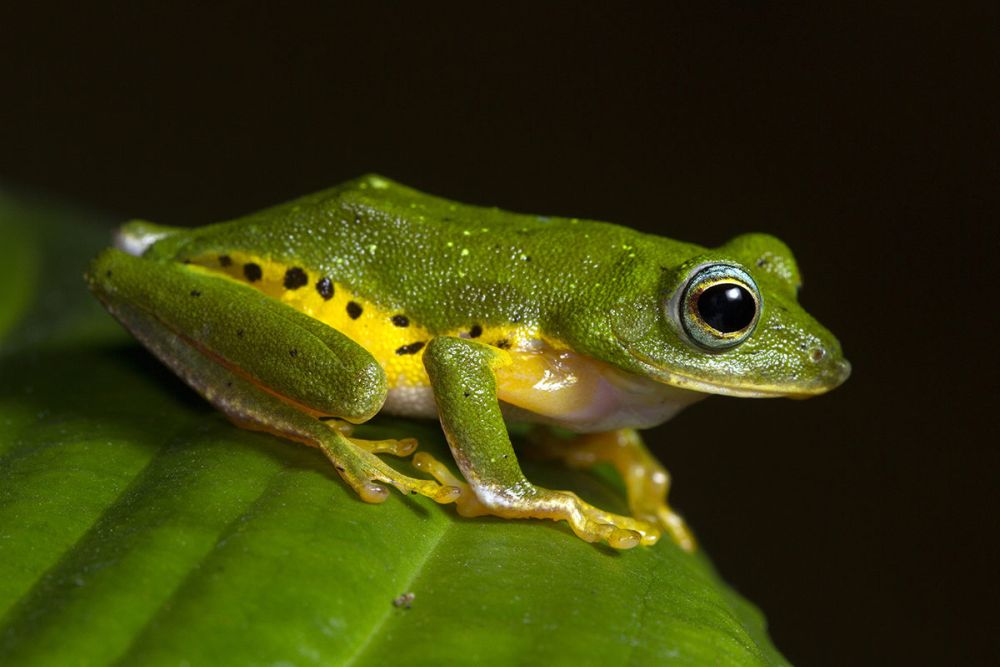Why we Need to Preserve Freshwater Swamps of the Western Ghats?
With a history going back millions of years – long before the introduction of agriculture – the swamps are believed to have once spread across the entire stretch of the Konkan coast. But with the duration of the monsoon becoming shorter, the freshwater swamps of the Western Ghats shrunk in size, and over the past few decades, they were converted to paddy fields or plantations of areca nut, rubber, coffee, or teak.
Now, these fragile primeval forests are a fast-disappearing and fragmented habitat, confined to small patches – so much so that they are considered among the most endangered ecosystems of India.
Table of Contents
Freshwater Swamps in India
Freshwater swamps in India have a long-standing relationship with tribal and village communities. In the Western Ghats, they are found in wet evergreen forests and are a sanctuary to some extremely rare wildlife and plant species, as well as remnants of ancient local culture and tradition.
First reported in 1960 from the Travancore region of Kerala, the primeval swamps are found in the flat, forested valleys of Shendurney Wildlife Sanctuary, Kulathupuzha, and Anchal in the Southern Western Ghats of Kerala – consisting of around 60 patches below 1.5 square kilometers of area in total.

A freshwater swamp in Western Ghats | Image: Ravikanth G
The freshwater swamps are also found in the Uttara Kannada district of Karnataka, around 51 patches covering an area of 0.098 square kilometres. Additional patches have also been found in the Shimoga and Dakshina Kannada districts of Karnataka by senior scientist T.V. Ramachandra and his team, though their findings are yet unpublished.
Until recently, the northernmost distribution of freshwater swamps in the Western Ghats was reported to be from Goa’s sacred grove Nirankarachi Rai in Bambar, Sattari taluka. But in 2018, researchers discovered Myristica swamps further up north in the Western Ghats of Maharashtra.
Freshwater Swamps of Western Ghats
Freshwater swamps are some of the Western Ghats’ least studied ecosystems with immense hydrological and ecological value. The Western Ghats has three distinctive freshwater swamp types – Myristica swamps, Elaeocarpus swamps and hadlus.
These ancient swamp forests hold immense environmental and cultural value yet they remain largely unknown and unexplored, let alone unprotected.
Myristica Swamps
The ancient Myristica swamps are found in the Western Ghats from Goa to southern Kerala. This wonderful habitat needs urgent preservation from climate change effects. True to their name, these swamps are dominated by species in the Myristicaceae family, which are well-adapted to life in a submerged environment. Then thin, moist bark and large leaves of these evergreen trees allow for rapid shedding of water.
Since their discovery in 1960, over 79 trees, 26 shrubs, 27 climate,s and 44 herb species have been documented from Myristica swamps across their endemic range. 23 of the recorded tree species are endemic to the Western Ghats, and common species include Syzgium travancoricum, Gymnacranthera canarica, Myristica fatua var. magnifica and Semecarpus Kathalekanensis.
Over 600 species of fauna ranging from flatworms to large mammals are found in Myristica swamps. A 2014 study recorded 14 species of freshwater fishes and 56 species of amphibians from swamps in southern Kerala. More than 206 species of butterflies from six families were reported from swamps in Kerala and due to a high density of diverse host plants, these freshwater swamps have been declared as critical butterfly habitat in India.
The slow-moving waters of Myristica swamps make them perfect breeding habitat for frogs such as Nyctibatrachus jog, N Kempholensis, N Kumbhara and the endemic Mercurana myristicapalustris. The former species are found in the central Western Ghats, whilst myristicapalustris lives in the foothills of the Agasthyamalai Hills of Kerala.
Myristica swamps have more than 16 species of freshwater fishes with 3 species endemic to the Western Ghats biodiversity hotspot. Researchers have also documented 21 reptilians, including 13 species of snake. The Malabar pit viper and the Gunther’s Supple Skink are the only reptiles endemic to the Western Ghats.
Elaeocarpus Swamps
Found in the midst of a mid-elevation evergreen forest in the southern Western Ghats, Elaeocarpus swamps mostly consist of trees from the Elaeocapaceae family, which are considered valuable for their unique medicinal properties.

The Myristica swamps in the Western Ghats | Image: Pradeep Hegde/Mongabay
This is yet another important unique habitat type, similar to Myristica swamps, in the low elevation evergreen forests of Western Ghats. This swamp habitat supports many rare plant species. Trees in the swamp are located with various epiphytic plants including orchids compared to the surrounding closed-canopy forest. Swamps in the medium deviation evergreen forests as many plants in this unique habitat are rare and endemic.
Researchers have found that these swamps have chemicals that may help in the treatment of diabetes and cancer, though only a few have studied its further implications. Few sustainable populations of Elaeocapaceae trees have been recorded from India, as they have a low germination rate and poor success ratio. Agasthyamalai Biosphere Reserve is one of the few locations in India, where these lesser-known habitats can be found.
Hadlus Swamps
Deep in the forests of Nagarahole and Bhadra Tiger Reserves in Karnataka, one can find swampy lowlands filled with tall reeds and marsh-dwelling grasses. Guar, sambar, and spotted deer also frequent these swamps for grazing.
In Nagarahole, hadlus swamps are mainly concentrated in the teak-dominated regions of the tiger reserve. Owing to their low-lying position in the ecosystem and the subsequent rich soils that retain moisture, hadlus swamps remain green during the dry season, providing habitat and fodder for a range of endemic species.

A female Mercurana myristicapalustris | Image: David V Raju/Mongabay
Some hadlus are known to have formed after the relocating of once-agricultural tribal settlements from protected areas, leaving behind swampy patches of fertile land.
A study on butterfly diversity in the central Western Ghats surmised that these swamps may provide critical habitat for endangered butterflies, especially serving as stopover sites for migratory butterflies. The repositioning of agricultural settlement and the consequent return of the land to its natural state is thought to be the most likely cause for the formation of hadlus along the central Western Ghats.
Threats to Freshwater Swamps
Studies have examined the impact of climate change on the distribution of freshwater swamps, and concluded that besides enduring several natural calamities, these habitats will suffer from a reduced overall suitable habitat area.
Conservationists are concerned over the effect of erratic and high rainfall patterns on the regeneration of swampy species. While floods could result in seedlings and seeds being uprooted and washed away, dry spells, on the other hand, could result in higher mortality of the seedlings.

A Malabar pit viper | Image: Deccan Herald
Apart from the natural elements affecting the freshwater swamps amidst climate change, many anthropogenic threats are looming over these habitats. Conversion of swamps into agricultural fields, constructional activities, and illegal logging in these regions can be severely devastating to these unique habitats.
Faith and Conservation of Swamps
The practice of assigning religious value to forest patches goes back to the tribal communities that placed value on all living and non-living elements of nature, be it – rocks, trees, water-bodies, or wildlife. In the Western Ghats, many hunting communities have preserved their ancient customs, including that of sacred grove worship.
They provide a perennial water source for irrigation and domestic use, create patches of cooler temperature regulate rainfall and their tangled root systems allow for the regular flow of pure water and stop soil erosion.

Swamps are turned into paddy fields, one of the largest threats to these ecosystems in the Western Ghats | Image: Priya Ranganathan
Due to their ability to retain water all-year-around, freshwater swamps play an important part in sustaining water in the streams and groundwater sources. These swamps act as a sponge holding the water during monsoon and then slowly release to the stream during lean seasons. Considering the relationship of water sustenance with the swamps, these fragile ecosystems were conserved as sacred by local people during pre-colonial times.
Moreover, during heavy rains, they help in moderating floodwaters. The swampy forests have higher above-ground biomass and carbon storage than neighbouring non-swampy forests, these relict ecosystems have been helping the globe in the removal of carbon amidst the backdrop of global warming.
Scientists concur that the delicate and fragmented freshwater swamps are facing many threats and are in dire need of conservation. Given the higher biomass and carbon sequestration potential for the swamps, forest management policies need to be revised. Providing incentives to farmers and other forest dwellers of the Western Ghats in the form of carbon credits for their role in promoting and guarding watershed vegetation. Such programmes will uplift their livelihoods whilst also saving these ancient forests.


